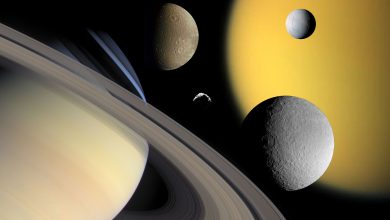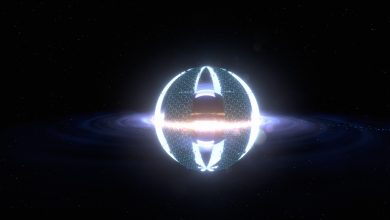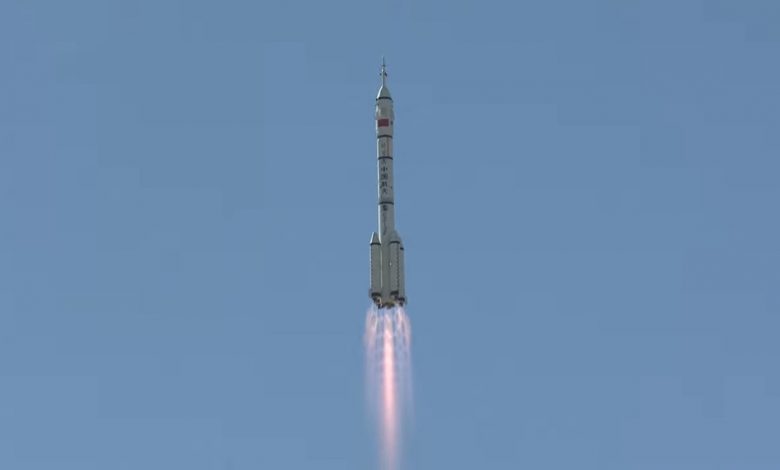
China has launched three astronauts into orbit to begin occupation of the country’s new space station.
The three men – Nie Haisheng, Liu Boming and Tang Hongbo – are to spend three months aboard the Tianhe module some 380km (236 miles) above the Earth.
It will be China’s longest crewed space mission to date and the first in nearly five years.
The crew successfully docked with the space station just over seven hours after the launch.
The moment of contact was met with applause from mission control in China.
Their Shenzhou-12 capsule took off atop its Long March 2F rocket on Thursday.
Lift-off from the Jiuquan satellite launch centre in the Gobi desert was at 09:22 Beijing time (01:22 GMT).
The launch and subsequent mission are another demonstration of China’s growing confidence and capability in the space domain.
In the past six months, the country has returned rock and soil samples to Earth from the surface of the Moon, and landed a six-wheeled robot on Mars – both highly complex and challenging endeavours.
Shenzhou-12 launched on top of the human-rated Long March 2F vehicle, which is based on the retired Long March 2E rocket formerly used to launch geostationary satellites. Also known as the Chang Zheng 2F (CZ-2F), the launcher is equipped with two stages and four liquid rocket boosters, all fueled by nitrogen tetroxide and unsymmetrical dimethylhydrazine (UDMH).
These hypergolic fuels are very toxic, which would become a significant problem if the rocket’s remains were to impact a populated area. Future Chinese launch vehicles are being designed to avoid using these propellants.
The vehicle is also equipped with a Soyuz-style fairing, with grid fins and a solid-fueled escape motor on top, to ensure that the crew would be able to escape a failing booster. This technology is based on the abort system used on the Soyuz carrier rocket, which has been used a few times over the years to save flight crews, most recently the Soyuz MS-10 crew in October 2018.
Like the abort system, the Shenzhou spacecraft that will be flying to the new Chinese space station this week draws heavily on Soyuz technology. Shenzhou was approved in 1992 as part of the Chinese human spaceflight initiative known as Project 921, and has a design layout very similar to the long-serving Soyuz spacecraft built in Russia.
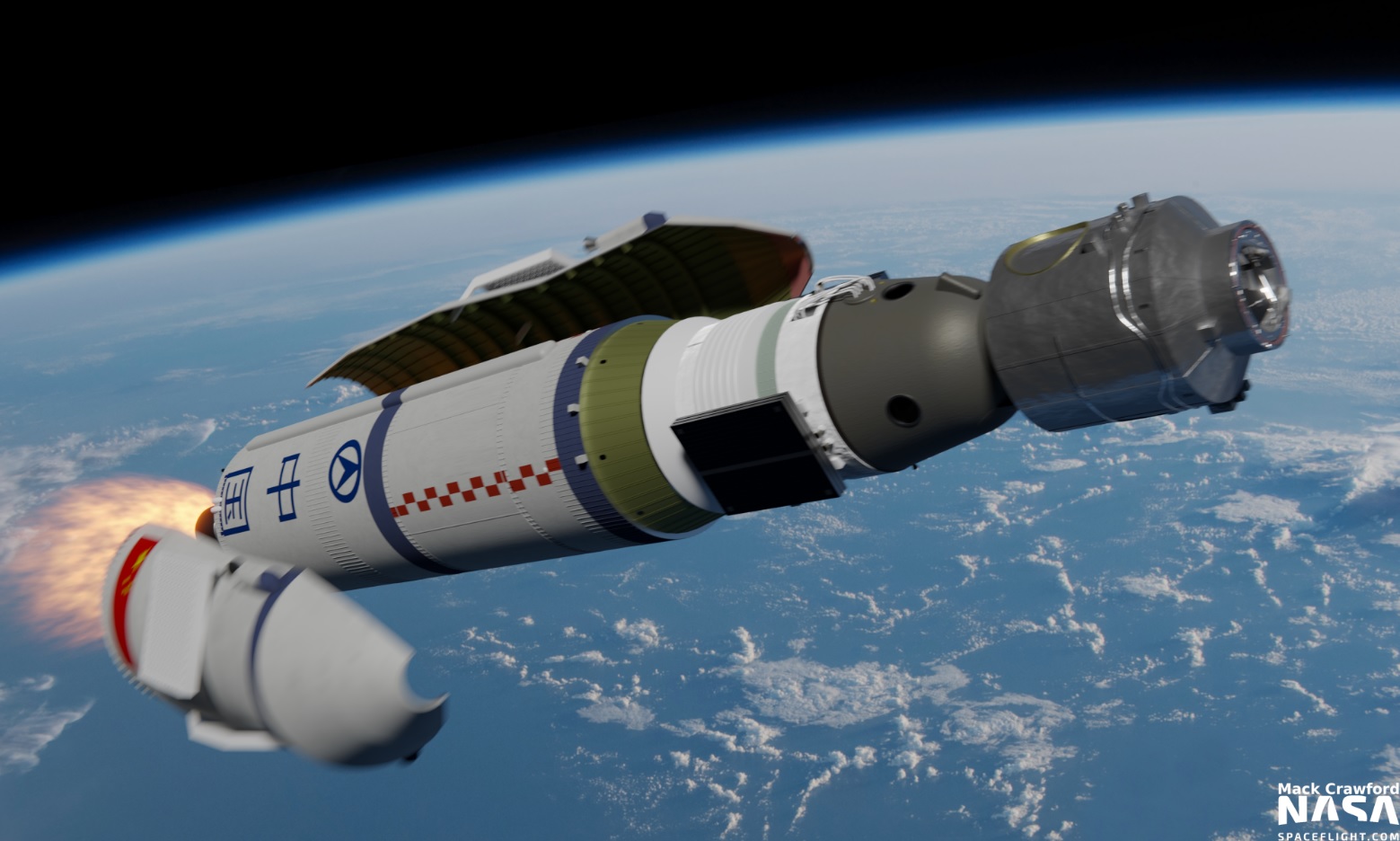
In the front of the spacecraft, the orbital module for Shenzhou-12 and future spacecraft contains an androgynous docking ring based on Russian APAS technology (used on ISS), which will be used to dock to the Tianhe core module. In the middle, the descent module containing the crew is a scaled-up version of the Soyuz descent module with a very similar mold line. The rear of the spacecraft is a service module equipped with engines, fuel tanks, and solar panels, much like the Soyuz and Progress spacecraft.
The mission will be commanded by Nie Haisheng, who is making his third spaceflight. He has previously flown on the Shenzhou-6 and Shenzhou-10 missions, the latter flying to the Tiangong-1 space station in 2013. Nie, from Hubei province, is 56 years old and is a major general in the People’s Liberation Army Air Force (PLAAF). At the end of this mission, he will have spent approximately 114 days in space, becoming the all-time Chinese record holder for the longest time total in space.
Nie is accompanied by two crew members, referred to as “operators.” The first Shenzhou-12 operator is Liu Boming, 54, from Heilongjiang, who previously flew on Shenzhou-7 in 2008 and became a participant in China’s first ever spacewalk. The second is Tang Hongbo, who like Liu, is also a PLAAF fighter pilot. Both crewmembers and their commander will stay on board the new space station for approximately 90 days before coming home in September.
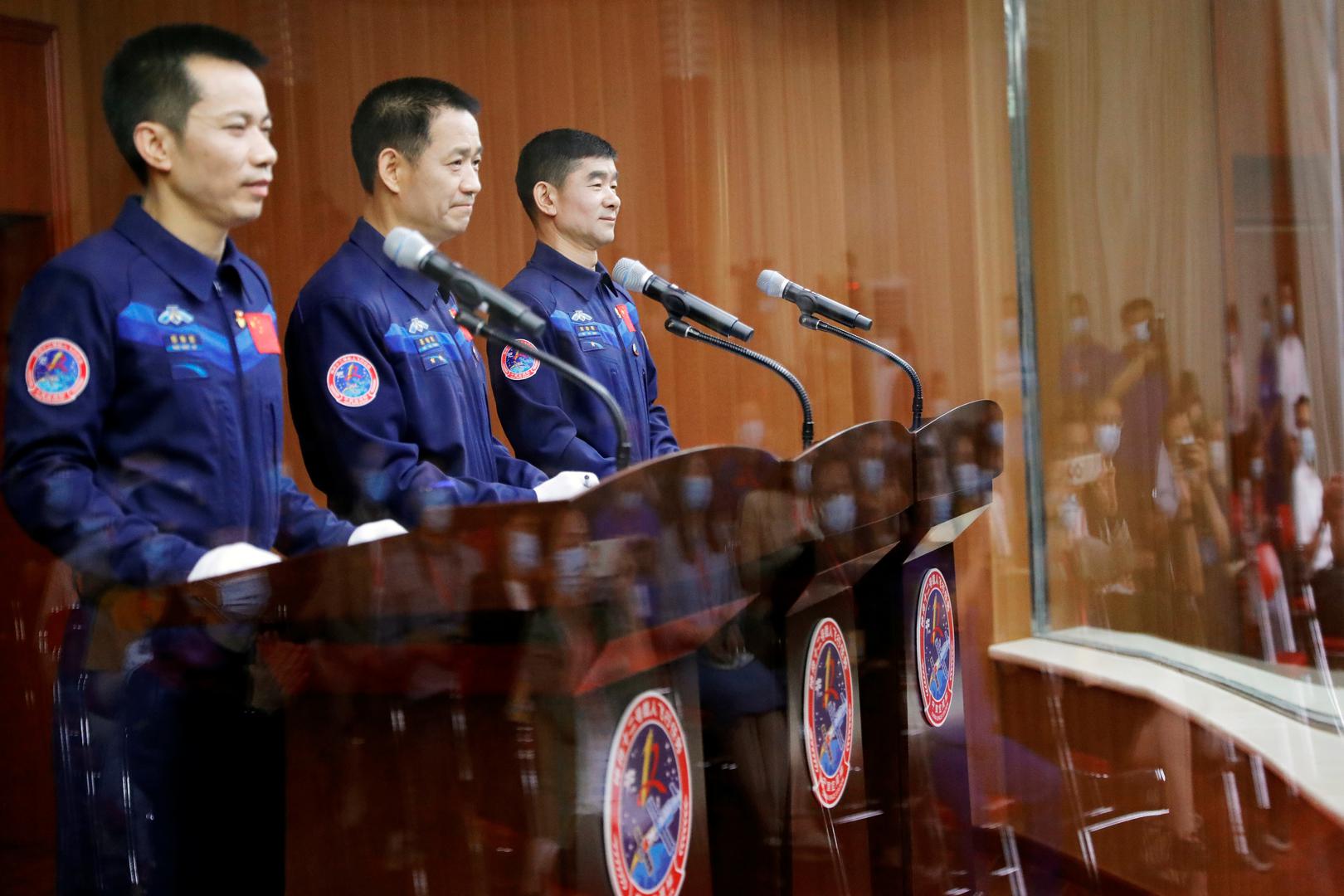
The three crew members, wearing launch and entry suits based on a reverse-engineered Sokol suit provided by Russia, will walk out past military officers and a crowd of well-wishers and board a bus to the launch pad. After boarding the Shenzhou descent module crew compartment, they’ll launch on a 41 degree inclination relativie to the equator, into an orbit that will end up 370 kilometers in altitude to rendezvous with the Tianhe space station core module.
The Shenzhou-12 mission is the first crewed mission by the Chinese space program in five years and the seventh overall mission of the Shenzhou spacecraft, which conducted its first crewed flight in 2003. For comparison, the seventh U.S. crewed spaceflight was Gemini 3 in 1965, the first flight of the new two seat spacecraft commanded by Gus Grissom, with John Young as the pilot. The seventh Soviet crewed spaceflight was Voskhod 1 in 1964 which flew three cosmonauts in a spacecraft based on the Vostok but with modifications and the ability to fly multiple crewmembers.
Each crewed Shenzhou mission to date has featured new milestones in Chinese human spaceflight, but Shenzhou-12 is inteded to start an improved cadence of Chinese human spaceflight launches, being the third of 11 missions in the 2021-2022 timeframe to build up the new Chinese space station.
The first mission in this series was the launch of Tianhe in April. The next was the launch of Tianzhou-2 late last month. The Tianzhou is a robotic cargo spacecraft based on the Tiangong-1 mini space station, and fulfills a similar role to the Chinese program that Progress and Cygnus fulfill for ISS.
The Tianzhou-2 cargo ship was filled with supplies for the Shenzhou-12 crew and had to dock successfully to Tianhe before the Shenzhou mission could go ahead this month.
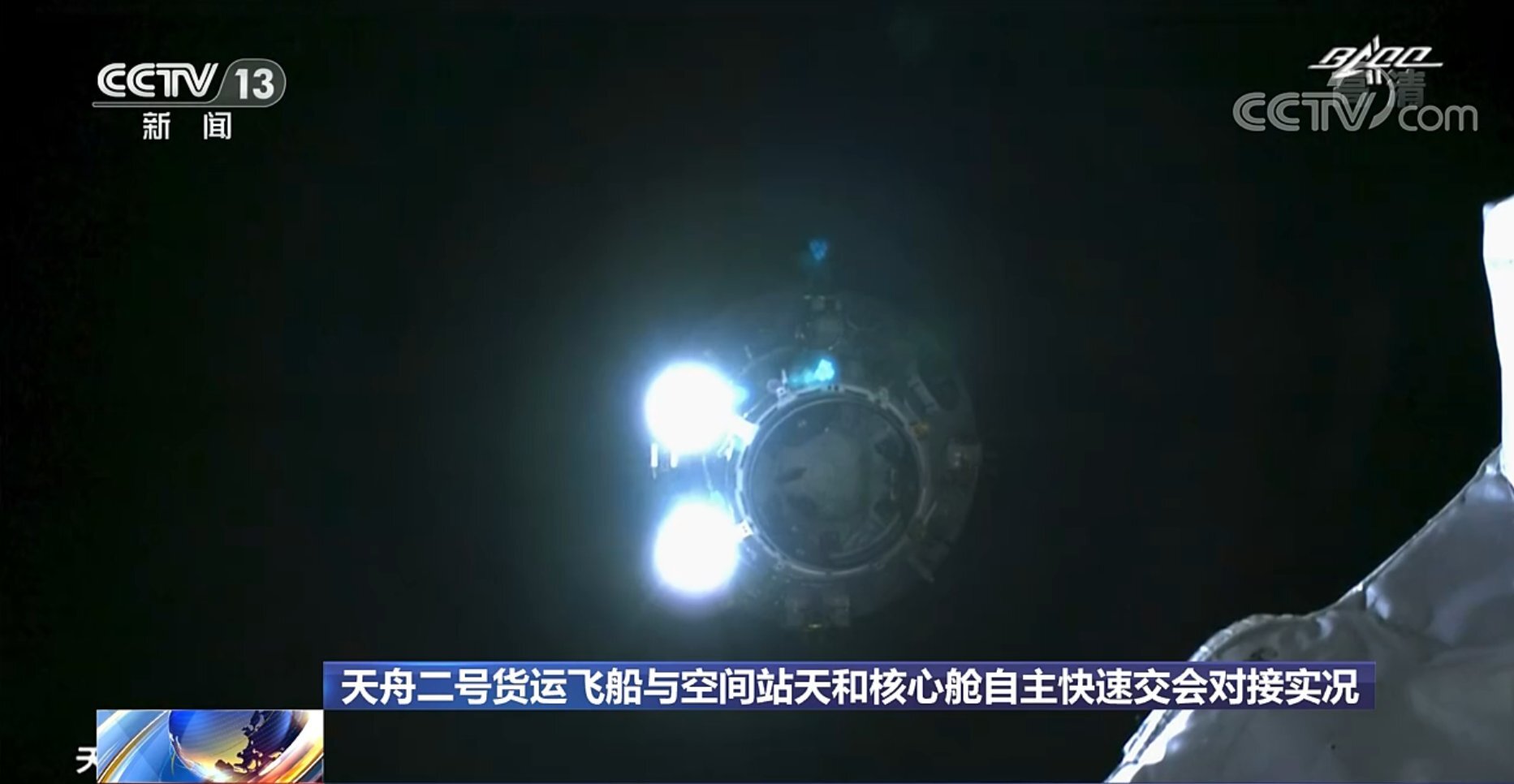
The Shenzhou-12 mission will be followed by the Tianzhou-3 robotic cargo flight in September and the Shenzhou-13 crew mission in October, making 2021 the first year with multiple Chinese crewed launches. For 2022, the Chinese space station flight manifest features the Tianzhou-4 and Shenzhou-14 flights in the spring, the Tianzhou-5 and Shenzhou-15 flights in the fall, and the Wentian and Mengtian scientific modules set for summer launches.
The Shenzhou-12 mission is planned to dock with the Tianhe space station core module as early as six hours after liftoff, though the actual docking time is not yet known. The crew members will enter the station and outfit it for their three-month mission. They will no doubt find the core module, with a living space of 50 cubic meters, roomier than the Shenzhou spacecraft they launched on.
The Tianhe core module, like the Mir core module and ISS Zvezda module, features six docking ports and a robotic crane to move future additional modules to their correct docking ports. The Wentian and Mengtian science modules will have most of the equipment and capability needed for science and spacewalks, but the Tianhe module will have some experiment capability for the Shenzhou-12 and 13 mission crewmembers to use.
The Tianhe’s main function is as a control center and living quarters for the station, and the Shenzhou-12 crew will be the first to use the living quarters as well as the control systems. The Shenzhou-12 crew is also planned to conduct two spacewalks during their mission.
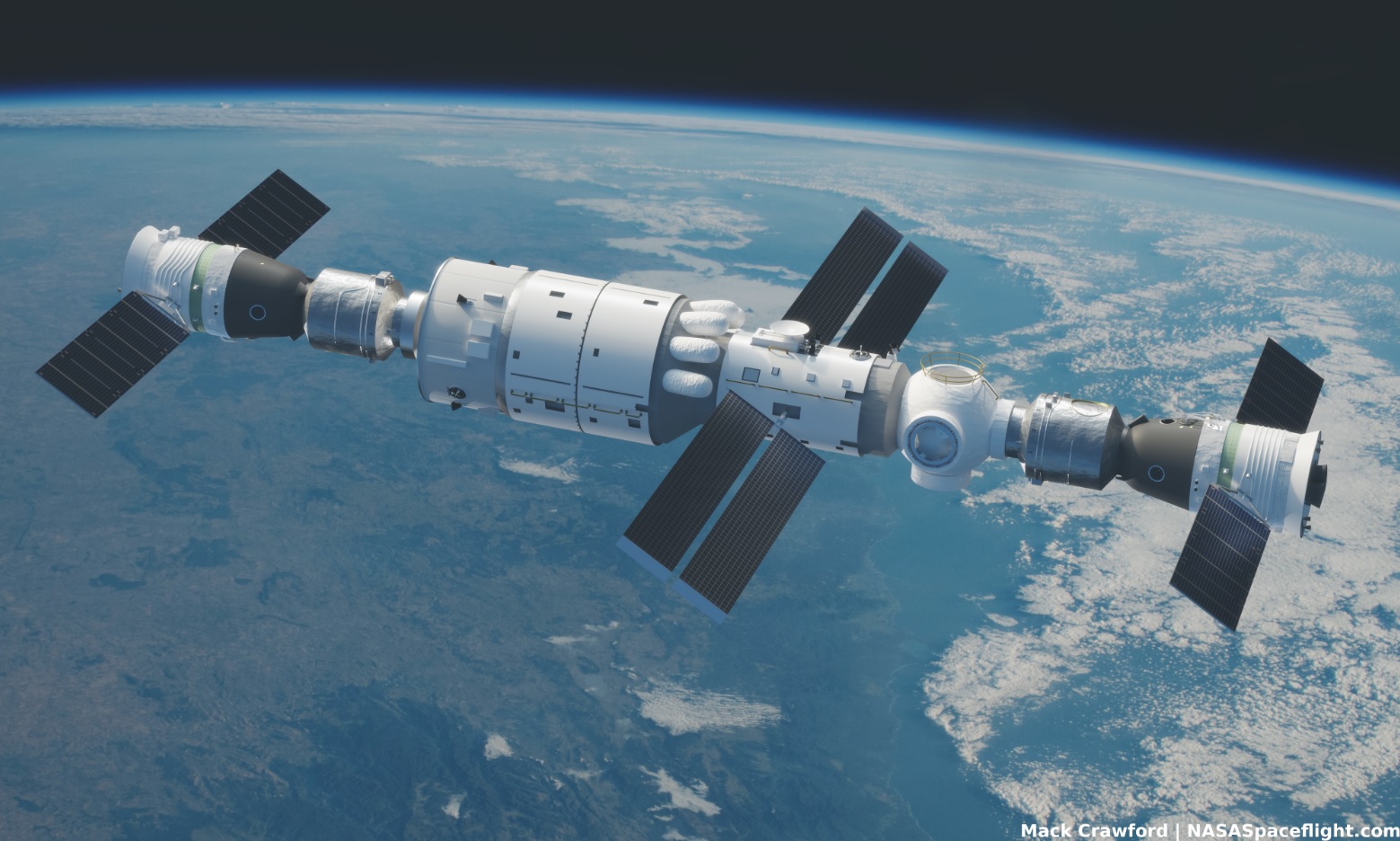
The Shenzhou-12 crew is expected to be the first of many to reside aboard the Chinese Space Station, and not all occupants are expected to be Chinese. Russia has announced that it will fly Soyuz spacecraft and crews to the Chinese station from Vostochny or Kourou, and the European Space Agency has an agreement with the Chinese space agency CNSA as well for its astronauts and research to use the Chinese station.
China has also signed an agreement with the United Nations Office for Outer Space Affairs to allow the Chinese station to host international experiments, and some of these experiments have already been chosen. In the future, this cooperation could extend to hosting astronauts from developing countries without their own program, along with ESA and Russian crewmembers.
ESA astronauts Matthias Maurer and Samantha Cristoforetti have trained with the Chinese program and its taikonauts, as part of preparations for a future cooperative spaceflight. As ESA astronaut Maurer stated, “I am very much looking forward to expanding our cooperation with our Chinese friends into space.”
The Chinese Space Station is also planned to host a Hubble Space Telescope-class orbiting astronomical observatory known as Xuntian, scheduled for launch in 2024. This observatory would fly free in its own orbit to conduct observations and would dock with the station periodically for servicing.
The Shenzhou-12 mission is another step in China’s plans to become a increasingly prominent spacefaring power. These plans will expand the number of humans in space and are expected include plans for a crewed landing on the Moon sometime in the next 10-15 years.
China’s space ambitions
China has in recent years made no secret of its space ambitions.
It has poured significant funding into its space efforts, and in 2019 became the first country to send an un-crewed rover to the far side of the Moon.
But it’s had to go at it alone in developing a space station, in part because it has been excluded from the International Space Station project.
The US, which leads that partnership with Russia, Europe, Canada and Japan, will not co-operate with the Asian nation in orbit.
For its part, China says it is open to foreign involvement on its station. In the first instance, this means hosted scientific experiments. For example, the Shenzhou-12 crew will conduct cancer investigations that are led from Norway. And on the outside of the station, there is an Indian-developed telescopic spectrograph to study ultraviolet emissions coming from deep space, from the likes of exploded stars.
But, long term, there probably also will be visits to the station by non-Chinese nationals.
Russia, which has shared technology in the past with China, has mentioned the possibility of sending its cosmonauts.
At Wednesday’s press conference to introduce the Shenzhou-12 crew, Ji Qiming, an assistant director with China’s human spaceflight agency, said: “We welcome co-operation in this regard in general.
“It is believed that, in the near future, after the completion of the Chinese space station, we will see Chinese and foreign astronauts fly and work together,” he added.
President Xi Jinping has also thrown his support behind the country’s space endeavours and the Chinese state media regularly cast the “space dream” as one step in the path to “national rejuvenation”.


